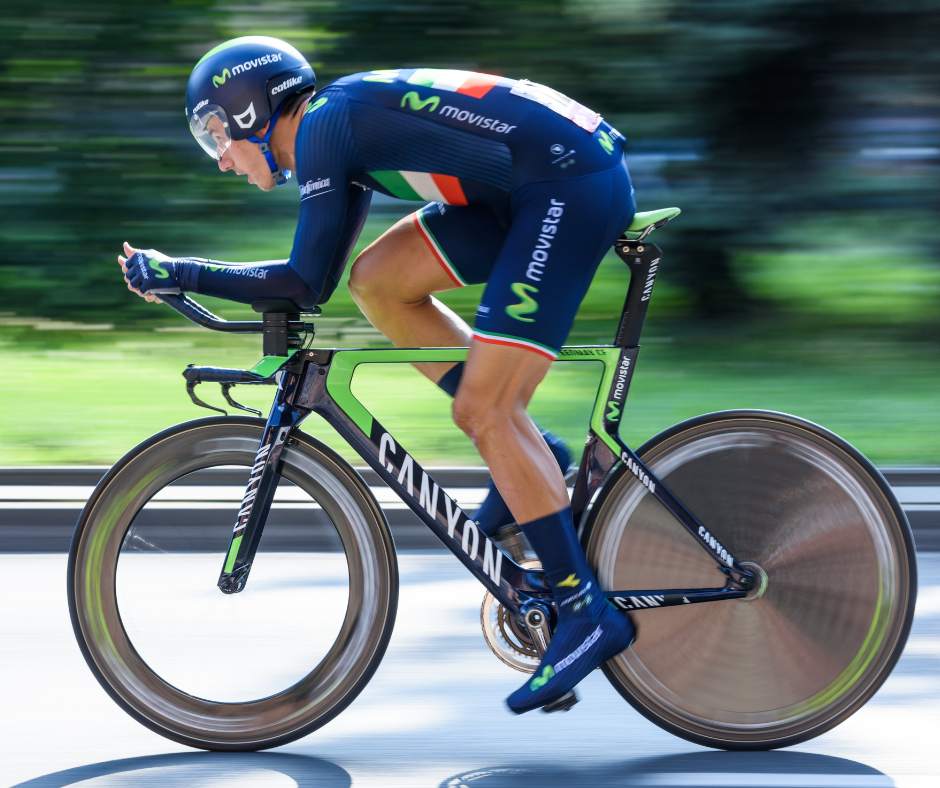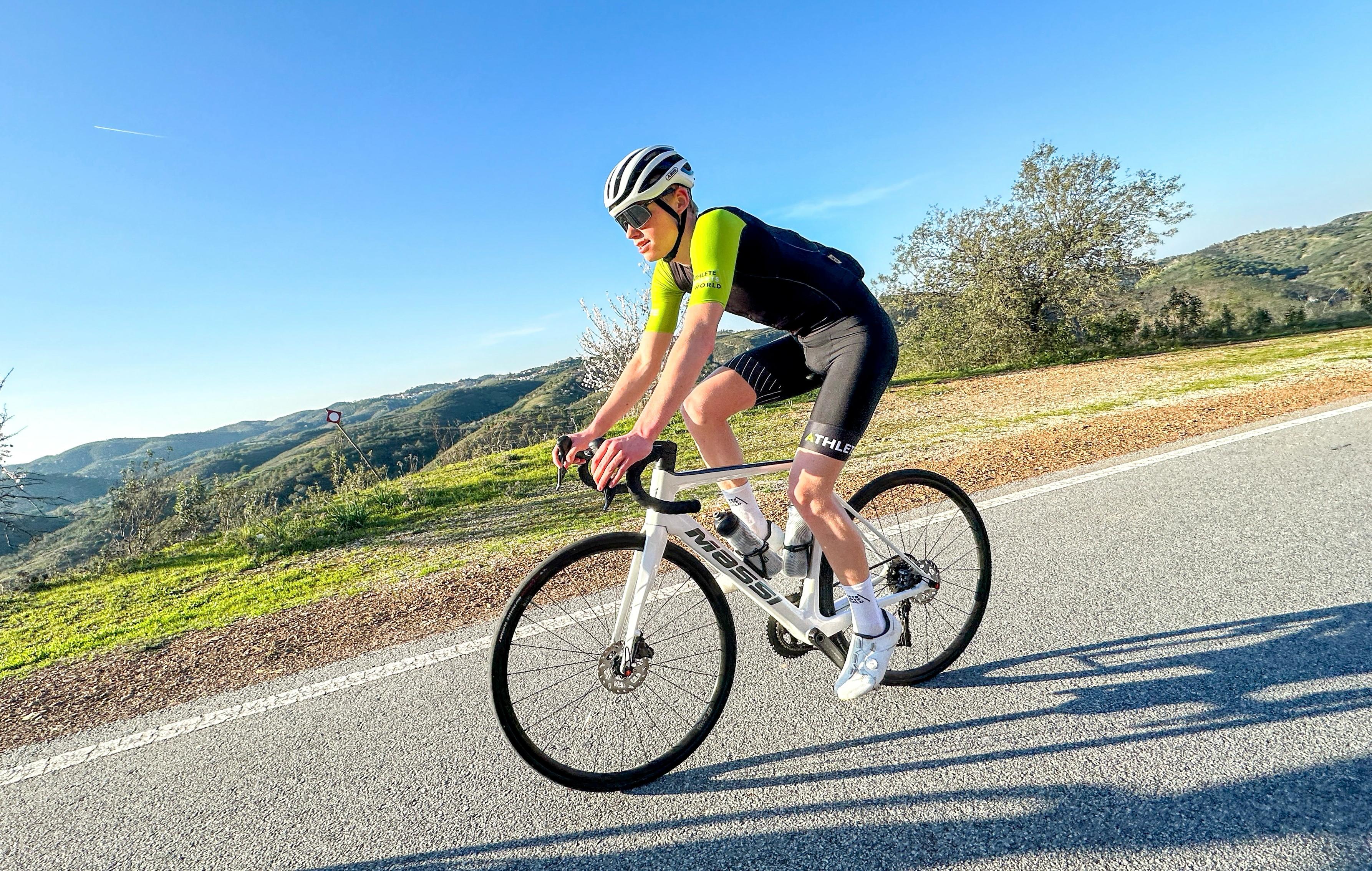Going downhill on your road bike can be a nerve-wracking and dangerous experience if you don't master the right techniques. It requires not only physical skills, but also the right equipment and products to make the descent as smooth and safe as possible.
In this blog, we share 6 essential tips for descending safely and masterfully on your road bike, along with recommended products you can use to put these tips into practice.
THE BASICS: BODY POSITION
Proper body position is the key to a controlled descent on your road bike.
Shift your weight back on your road bike by pushing your hips back slightly and lowering your heels.
Keep your elbows bent and your knees loose, allowing the road bike to move under you while maintaining stability.
Be sure to keep your upper body low and point your head over the handlebars, which improves aerodynamics and can increase your speed.
To practice this downhill technique, consider purchasing an adjustable stem for your road bike.
This allows you to adjust the height of your handlebars so you can have a more comfortable position while descending.
BRAKING STRATEGY: AVOID SUDDEN BRAKING
Applying the brakes abruptly can lead to skidding and loss of control.
Instead, apply gradual and controlled pressure to both the front and rear brakes of your road bike, using both brakes evenly to distribute braking force.
Remember, you can apply more braking force to the rear brake, but be careful to avoid locking it.
If you notice the rear wheel starting to slip, release the brake briefly and gradually apply more pressure to regain control.
Applying these braking techniques will help you descend safely and confidently without increasing the risk of accidents.
LOOK AHEAD AND ANTICIPATE
Your gaze plays a crucial role when going downhill on your road bike.
Keep your eyes on the path in front of you, look for obstacles and choose the best line.
By looking ahead, you create more time to react and adjust your trajectory, which improves your overall control.
To increase your focus on the road, consider purchasing the following products and cycling apparel:
- Sports glasses with interchangeable lenses: Sports glasses protect your eyes from dust, wind and insects and improve your vision.
- Bike computer with GPS: Allows you to track your speed and route so you can focus on the road instead of your phone.
TRAIN YOUR CORE FOR STABILITY
Tightening your core muscles stabilizes your body and maintains a strong connection to the bike.
A strong core allows you to respond more effectively to changes in terrain and direction.
As you ride downhill, consciously tighten your abdominal muscles while keeping your upper body relaxed.
Consciously tightening your abdominal muscles gives you a sense of control and stability during downhill riding, even when speeds are high.
It also helps absorb the shock of rough roads, allowing you to maintain more control of your bike and less chance of getting off balance.
TAKE TURNS WITH PRECISION
Taking turns on a descent requires precision and control. Here's how you do it:
1. Look ahead to the turn and plan your line so you can avoid obstacles and choose the right course.
2. Reduce your speed before the turn so you are not forced to brake heavily while already in the turn.
3. Then lean slightly into the turn to keep your bike balanced and increase the grip of your tires.
4. Keep your pedals horizontal to avoid touching the ground while cornering.
5. Stay relaxed in your upper body and arms to ensure a smooth and stable turn.
6. Practice regularly on twisty roads or trail to improve your cornering technique and build more confidence.
MAINTAIN YOUR BIKE
A well-maintained bike is essential for safe downhill riding.
Make sure your bike is in top condition by performing regular maintenance.
Consider these products to keep your bike in top shape:
- Bike Tool Set: With a comprehensive tool kit, you can easily perform basic repairs and maintenance on your bike.
- Quality tires and tubes: Invest in durable tires and tubes to reduce the risk of punctures during descents.
CONCLUSION
Going downhill safely on your cycling bike requires not only the right techniques, but also the right equipment and cycling clothing.
By optimizing your posture, braking strategy, viewing, core muscles, cornering technique and bike maintenance, you can enjoy exciting descents without worrying about your safety.
Invest in the recommended products to improve your skills and increase the enjoyment of downhill riding.
VISIT US FOR MORE ADVICE
If you need more guidance or are looking for cycling tips, we're here for you.
Visit our store where our knowledgeable team will be happy to help you with all your questions. Don't hesitate to call or email us for more information. Together we will work on your way to faster times on the bike!
Want more cycling tips? Like how to improve your cycling posture and aerodynamics for faster cycling times? Then read this blog!







